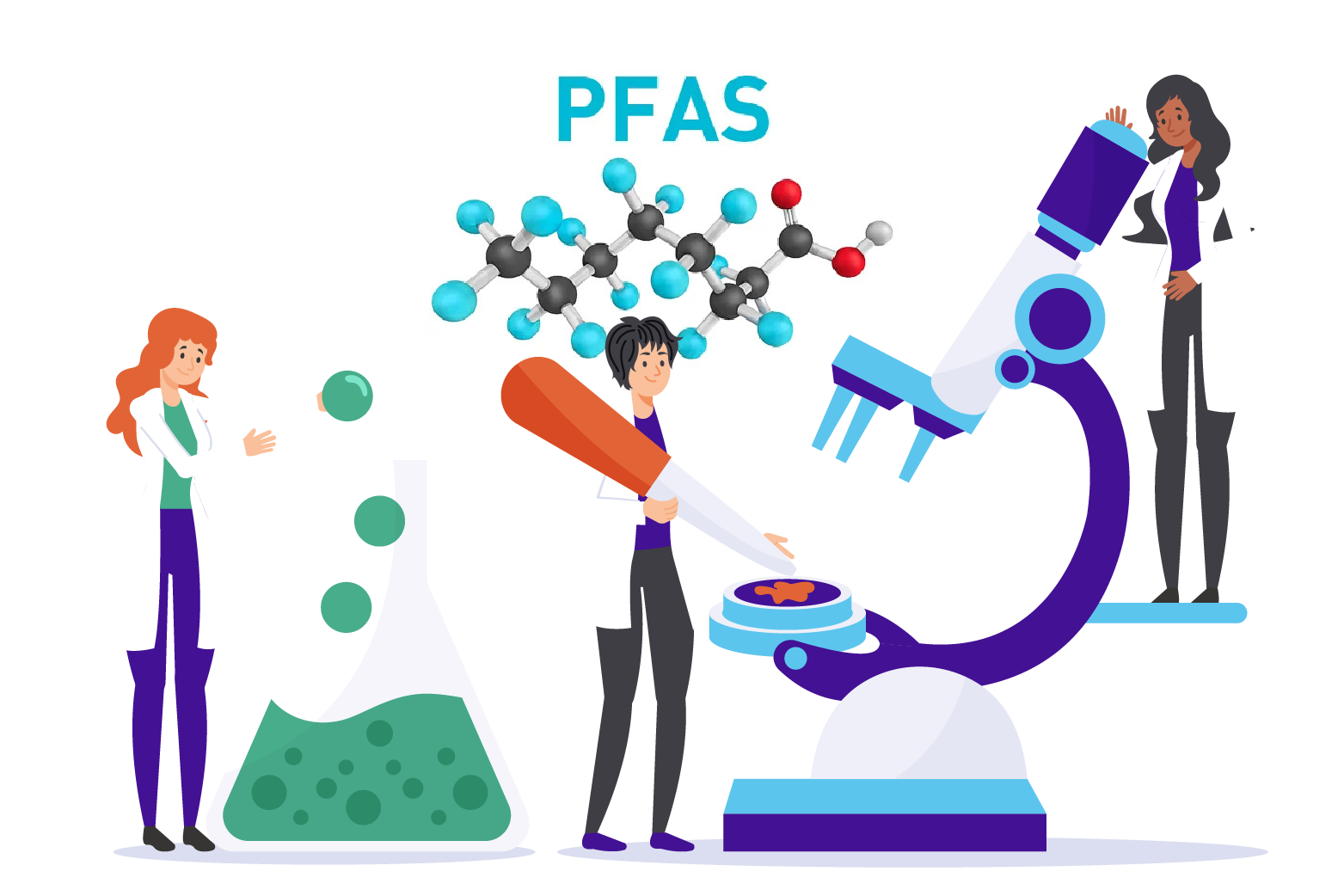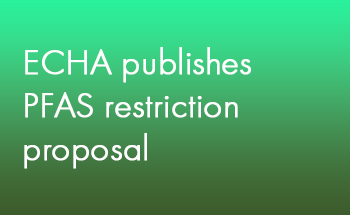
PFAS
PFAS are a group of nearly 15,000 synthetic chemicals widely used in various industries for decades due to their unique water- and grease-resistant properties. These substances have been utilized in consumer products, electronics, manufacturing, automotive, firefighting foams, etc.
The Concerns Surrounding
PFAS
The issue of per- and poly-fluoroalkyl substances (PFAS) has become a significant concern in recent years due to their negative impact on the environment and public health. These synthetic chemicals are also known as "forever chemicals" due to their high persistence, toxicity, and ability to accumulate in living organisms. Existing regulations, such as REACH, TSCA, Prop 65, and POPs, constantly evolve to regulate and restrict PFAS. Noncompliance may result in penalties, market exclusion, or product obsolescence.

Non-compliance with the PFAS Regulation
could result in
Legal action, including fines and penalties imposed by regulatory authorities.
Cleanup costs to reduce PFAS contamination in air, water, and soil can be high and may require businesses to implement newer technologies.
Additional penalties may include restricted operations, permit suspension, and increased scrutiny through regulatory agency inspections and audits.
A negative brand reputation can lead to losing customer trust and loyalty
Challenges to staying PFAS Compliant
-
 Identifying the presence of PFAS in the products
Identifying the presence of PFAS in the products
-
 Finding suitable alternatives to PFAS without compromising safety and performance
Finding suitable alternatives to PFAS without compromising safety and performance
 Varying PFAS regulations across regions (While the EU proposes banning PFAS, the US has varying regional regulations.)
Varying PFAS regulations across regions (While the EU proposes banning PFAS, the US has varying regional regulations.) Gathering accurate data and information from suppliers and manufacturers to ensure compliance. This process requires more than just obtaining data sheets or supplier product test results, making it resource- and time-intensive.
Gathering accurate data and information from suppliers and manufacturers to ensure compliance. This process requires more than just obtaining data sheets or supplier product test results, making it resource- and time-intensive. Developing efficient and sustainable methods for the remediation of existing PFAS is a continuous challenge.
Developing efficient and sustainable methods for the remediation of existing PFAS is a continuous challenge.

APA's 4 step approach to achieving PFAS Compliance

Analysis
Assessment to evaluate PFAS substances in the products and identify potential risks.

Engagement
Supplier follow-up to ensure product data is collected, like Full Material Declaration (FMDs) and Safety Data Sheets (SDSs)

Reporting
Simplify PFAS documentation and generate BOM-level compliance reports based on US regional or EU PFAS regulations

Guidance
Access our compliance domain experts for essential insights and guidance.
Create a PFAS-Free Environment with
APA's Greencheck
Using technology and domain expertise, we aim to safeguard public health and the environment. With APAs Greencheck, you can automate compliance processes, mitigate risks, and gain transparency into PFAS in your supply chain






